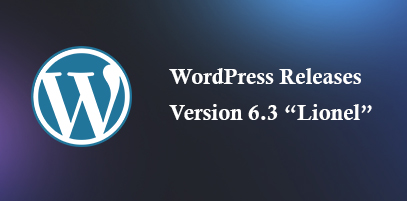Headless CMS
By :- Ilika - Web Guru Awards Team

A headless CMS could be a back-end solely content management system (CMS) designed from the bottom up as a content repository that produces content accessible via a quiet API or GraphQL API for the show on any device.
The term “headless” comes from the idea of chopping the “head” (the face, i.e. the website) off the “body” (the side, i.e. the content repository). A headless CMS remains with an associate interface to manage content and a quiet or GraphQL API to deliver content where you would like it. thanks to this approach, a headless CMS doesn't care concerning however and wherever your content gets displayed. A headless CMS has only 1 focus: storing and delivering structured content and permitting content editors to collaborate on new content.
The counterpart of a headless CMS is commonly referred to as monolithic, regular, or coupled CMS; We're aiming to use those terms shortly.
- Let's have a glance at a Monolithic CMS and its feature set:
- Info for the content to browse and write to.
- An admin interface to let editors manage the content.
- An integration of reading and writing.
- The actual front-end that mixes the info from the info with a markup language.
To convert that into a headless CMS we tend to take away the templating feature (4.) from the stack as that's the pinnacle of that CMS - the particular website. thereupon done, we can replace it with associate quiet or GraphQL API that's accessible by different systems to access the info that was managed within the Admin UI. Et voilà: you currently have gotten yourself a headless CMS.
Other than employing a regular/monolithic CMS, an internet site cannot be designed solely with a headless CMS. A headless CMS separated the pinnacle from its stack and thus lacks now deliberately. Therefore, the developer should craft the website by themselves and use the provided REST or GraphQL genus Apis of the headless CMS to access the content.
Creating the entire website on their own feels like an enormous task on the list, however by decoupling the CMS from the front-end a developer will select any technology they're already acquainted with and don't ought to learn the technology for that specific CMS.
Why will we want a Headless CMS?
The headless CMS is an important piece of technology as a result of we tend to board associate omnichannel world. The content that enterprises produce for his or her website additionally has to seem on apps, integrations, newsletters, and more. And managing a replica copy of that content for multiple channels could be a terrible, inefficient nightmare.
If your company makes an associate update to the means it describes a product, that update shouldn’t be derived and glued in twenty totally different systems. you ought to be ready to build the update in one centralized location and push the amendment bent all of the places wherever it matters.
That’s the facility of a headless CMS.
It works united central supply of truth for all of your company’s content and assets. It offers you one place to manage, edit, update and publish that content.
CMS Confronts varied Digital Content Consumption
Whereas several internet properties are designed employing an ancient CMS — WordPress, Drupal, Joomla, etc. — the emergence of the headless CMS offers some important advantages for companies that area unit growing into new channels, launching new products and integrations, or just interact with customers across a variety of touchpoints on multiple platforms and devices.
If we tend to compare the headless CMS with a standard CMS side-by-side, their area unit some important benefits that headless offers that aren't doable through most ancient CMS systems.
Who Uses a Headless CMS?
Beyond the theoretical, several industries and verticals have embraced the headless CMS as a central platform that powers their entire digital expertise across all devices and platforms. Headless CMS permits firms to attach with customers at scale, respond quickly to rising market opportunities, and contour content operations to enforce consistency whereas remaining agile.
Some of the industries employing a headless CMS include:
Sports groups
Powered by a headless CMS, sports groups will build an associate omnichannel fan engagement platform. By marrying content with personalized knowledge, groups will facilitate fans to feel additional connected than ever to the players they love most.
Airlines
Air carriers face a number of the foremost advanced content necessities of any trade. Their groups manage important, period of time communications, world content translation and localization, and associate omnichannel presence that spans lots of — if not thousands — of individual client touchpoints. Across owned net properties, mobile apps, email, third-party search sites, and physical displays, a headless CMS allows clear, consistent, and simplified communications that square measure continually correct and up to now.
Financial Services
In the monetary service sector, customers believe the period of time content to tell a number of their most vital life choices. They additionally demand personalized content that helps them navigate advanced processes and build smarter monetary choices. corporations would like the pliability to pioneer whereas maintaining a rock-solid, reliable foundation for managing content, and the way content is personalized and bestowed to every client.
Online Retailers
In online retail, the client expertise is king. Customers square measure fast to criticize brands that fail to fulfill their desires — or perhaps simply introduce a little quantity of friction into the shopping for method. Headless CMS permits online retailers to create 1:1 connection with customers, ligature selling and products content into client purchase history and alternative knowledge to deliver a very personal looking expertise at scale.
Would I like a headless CMS?
The answer to the present question is kind of straightforward, however, it won’t assist your abundant right away: It depends on your necessities. There square measure use cases wherever one CMS outstands the opposite and the other way around. to assist you to choose, let’s have a glance at the advantages extremely quick:
Use cases for Headless CMS
- Separating your content from the technical school stack of your website to be ready to move quickly.
- Websites, net apps that use JavaScript frameworks (VueJs/Nuxt.js, React/Next.js, Preact, ...).
- Websites created with static website generators like Jekyll, Gatsby, or Middleman.
- Enrich your e-commerce Stack (BigCommerce, Commercetools, Hybris, Magento2, or others) with the correct CMS for your selling team.
- Use it for feature flags of your own product to schedule releases of the latest options.
- As a configuration interface for your home automation resolution.
- Or to manage content for your computer network.
The point is: it's not restricted to websites
A headless CMS will deliver your content through associate API to wherever you wish it. thanks to the headless approach the content will be used on an associate iOS app, golem app moreover as any platform and technology you'll think about and is thus a robust choice for mobile and net developers.
Recent Topics
-
 WordPress.com Launches 100-Year Web Hosting Plan
WordPress.com Launches 100-Year Web Hosting PlanWordPress, the platform that helps people create websites, now offers something rare. It has taken a bold leap into the future with its 100-year web hosting plan. ...
Read MoreBy :- Laura Davidson
-
 5 Best AI Web Design Tools You Can Try
5 Best AI Web Design Tools You Can TryWhy bother with all the effort of creating websites manually when we have amazing AI tools? In fact, using these tools has become one of the most-practiced ...
Read MoreBy :- Tiana K
-
 Role of Animation and Micro-Interactions in User Experience
Role of Animation and Micro-Interactions in User ExperienceIn today's world, almost every brand wants to create a user-friendly interface for its customers. The main aim behind this is to increase customer base and revenue. Now, when it comes...
Read MoreBy :- Laura Davidson
-
 Web Design Trends to Watch Out for in 2024
Web Design Trends to Watch Out for in 2024Web design is a constant-evolving technology landscape. As a web designer, staying tuned with web design trends and keeping your designs up-to-date is important. These trends will affect ...
Read MoreBy :- Esther McGuinness
-
 The Power of Storytelling in Web Design Engaging Users with a Narrative
The Power of Storytelling in Web Design Engaging Users with a NarrativeStories never fail to engage listeners. That’s why web designers are leveraging the art of storytelling in their designs. In web designing, storytelling goes beyond merely usin...
Read MoreBy :- Navkiran Dhaliwal
-
 WordPress Releases Version 6.3 ?“Lionel”
WordPress Releases Version 6.3 ?“Lionel”WordPress 6.3 “Lionel” is out! Now, you’ll be able to create more beautiful and compelling websi...
Read MoreBy :- Tiana K
